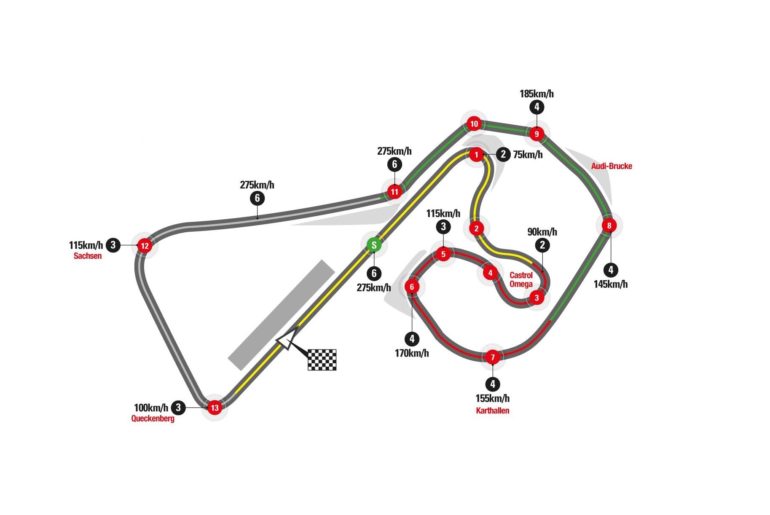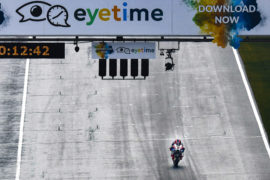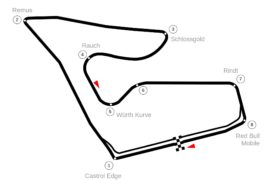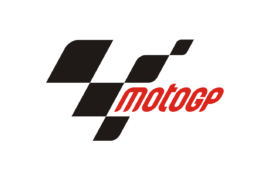The Sachsenring is a unique circuit, and a unique place. We say that about almost every racetrack we go to, but it is much more true of the Sachsenring than of anywhere else.
No track is as tight, yet deeply challenging as the tightly-coiled circuit in Hohenstein-Ernstthal, and the atmosphere among the fans is electric.
Normally here, I would give a brief description or history of the circuit at which MotoGP is due to race. But Mat Oxley has already done that much better than I would have, so I suggest you read his article on the Motor Sport Magazine website.
There is a very good chance that this is the last race here at the Sachsenring, as Oxley lays out in the article. But all hope is not yet lost: regional politics may yet solve the problem, though it will be done with taxpayers’ money.
Given the huge attendance at the circuit – Sunday numbers often well over 90,000, and over 100,000 on occasion – the race generates a huge amount of revenue for the surrounding area.
Hotels are full, restaurants are heaving, supermarkets stock extra food and drink (especially drink). All that generates more revenue for local government through taxes. But will that be enough to justify spending on keeping the race here?
King of the ‘Ring
It might almost be worth moving the race just to see a different winner of the German round of MotoGP. Marc Márquez owns the circuit, having won every race he has competed in here since 2010, making it eight wins in a row.
First, he won in 125s, in 2010. Then he won the two Moto2 races he competed in at the Sachsenring, in 2011 and 2012. And since moving up to MotoGP in 2013, he has won every premier class race at the Sachsenring, usually by a comfortable margin.
So who could challenge him? The short answer is, realistically, nobody. Márquez’s dominance at the Sachsenring is absolute. His prowess at turning left is peerless, and the nature of the track, where the bikes spend so much time on the left-hand side of the tire, suits him down to the ground.
The circuit suits the Honda as well: a couple of hard braking sections at Turn 1 and Turn 12, and only really the final corner where acceleration is hard enough to make it difficult to control.
That corner is so difficult to master – starting steeply uphill following a tricky uphill braking section – that it is almost impossible to get right for any bike.
Finding the right mixture of electronics and body control to keep the front wheel down means that even the bikes with good mechanical grip have a hard time.
Free at Last?
The other Hondas are likely to do well here too. The most interesting question for many is just how competitive Dani Pedrosa can be. With his future now settled – see this article for the full story of his retirement, and his background – a great weight has fallen from his shoulders.
“I was obviously pretty nervous before coming here and with all my family here that supported me,” Pedrosa said in the special press conference at which he announced his retirement on Thursday.
“On the other side: what impact will it have for the rest of the season? I hope a good one. Clearly I want to enjoy the races I have left, but in the end you have to enjoy competition in one way – giving the maximum – so I will take the races as I am now, giving 100%.”
Pedrosa has a stellar record at the Sachsenring, winning twice in 250s, and four times in MotoGP. His win rate at the track only fell when Marc Márquez entered the class, but a liberated Pedrosa could be enough to match him.
Pedrosa finished second behind Márquez in 2014 and 2015, and third behind his teammate and Jonas Folger last year. If ever there were a dark horse to beat Márquez, it is Dani Pedrosa this year.
Cal Crutchlow has not done too badly at the Sachsenring either. The LCR Honda rider finished second in 2013, riding the Tech3 Yamaha, and second again in 2016, this time on the Honda RC213V.
Crutchlow has mixed feelings about the track. “I have a strange feeling about it because when you ride it, it’s horrible!” he said on Thursday. “It is a go-kart track for us but normally you see a good race and you quite enjoy it.”
“We have a lot of fans that come here, which is important and we always look forward to coming here but it is so tight. That first, second, third corner…the third corner? I guarantee I could probably go around it as fast on my bicycle than I can on a MotoGP bike. I start to get motion sickness around there.”
The track gets better and from Turn 5 on, he said, and because of this, the layout grows on you as the weekend goes on.
“In Turn 11 you are going quick but the ones before not especially. You are hanging off the side of the bike for a long time. You don’t put your ass in the center of the bike for almost the whole lap here, so it makes it difficult to ride. Not particularly physical.”
“In the first session here you usually think ‘oh my god, this place is strange’ and then it starts to come. I do like the track though. It is just really small for a MotoGP bike.”
All About the Long Corners
Normally, you would expect a track which turns so much to favor a bike like the Yamaha, which is so strong in sweeping corners.
But the Yamaha couldn’t match the pace of the Repsol Hondas last year, or at least, the factory Yamahas of Valentino Rossi and Maverick Viñales couldn’t. The Monster Tech3 Yamaha of Jonas Folger did just fine, the German pushing Márquez all the way to the line.
The factory bikes suffered with understeer in 2017, Valentino Rossi explained. “Usually Marc is very strong everywhere so you have the first part that is very tight and after it becomes medium-fast and after he becomes more fast.”
“I don’t know if we have a particular part where we lose or if it is a little bit everywhere. Speaking about me, last year we suffered very much but the bike of last year for me was very difficult because we had a lot of understeer. In a tight track like this we suffered. We hope with the bike of this year I expect, I hope, to be stronger.”
The Ducatis have been on an upward curve at the Sachsenring, getting better as Gigi Dall’Igna and his engineering team have managed to make the Desmosedici turn better. The GP18 should be better than last year’s bike, which was itself not a million miles off.
Andrea Dovizioso explained where the weaknesses of the GP18 lie. “We are very strong in acceleration and this track doesn’t have a lot of acceleration. You have to stay with the angle for most of the lap so this on paper is not the best but I want to wait for the weekend as we can be more competitive than last year, I hope.”
Jorge Lorenzo agreed with his teammate. “I think our bike is a bit more competitive this year and works a bit better in a long sector of turning. Probably we will lose less compared to last year and can reduce the distance.” At least the Sachsenring was not as physically demanding as other tracks.
“There are tracks that are much more physical than others. Austin for example has hard braking and you have to stay stiff with the arms and change direction at high speed but Assen is also very physical in places.”
“This ergonomic change has been huge for me, a step forward, but on some physical tracks you just have to use that energy. Here is it very narrow and short and you do a lot of laps and it could be better in that area than Assen. It was good for me to get away from Assen; it was hard for me in that area. I think Sachsenring will be OK.”
Coming off his best result in Assen, a second place, Alex Rins faced the Sachsenring with confidence.
The Suzuki GSX-RR is arguably the best bike at changing direction and holding a tight line through the corners, and the 2018 engine is a vast improvement in helping the bike turn, a factor which held it back last year.
In theory, the Suzuki should be the bike to beat the Honda, able to turn better than the RC213V, and at a track where the engine won’t make the difference, and where there are few spots where riders can make up ground on the brakes.
The main overtaking point on the circuit at Turn 12 is dictated more by the speed at which you dare take Turn 11, or the Waterfall, the turn which has now been renamed the Ralf Waldmann Curve, than by how hard you brake for that turn.
The Suzuki, and the unrivaled courage of both Alex Rins and Andrea Iannone, could well put the cat among the Honda pigeons.
If Not Dani, Who?
Obviously all eyes were on Dani Pedrosa and his announcement at the Sachsenring, but the ride Pedrosa won’t be taking is also receiving some attention.
Franco Morbidelli – passed fit to ride after breaking a metacarpal in his left hand in Assen – spoke about his chance of joining the Petronas SIC Yamaha team, due to take the place of the Angel Nieto Team in 2019.
“We are working and there is this clear opportunity to go with another team and with Yamaha,” Morbidelli said. “We are trying to understand the situation with my team right now. We are trying to understand how it would be if I go to this other team. At the moment, from my part, nothing is 100 percent sure. We are just working to understand some things.”
Morbidelli is managed by the VR46 Racing Academy, but is under contract to the Marc VDS team for 2019.
However, the Marc VDS team are set to pull out from MotoGP, unless Emilio Alzamora can get some money from Estrella Galicia to fund the team, in the absence of funding from Marc van der Straten, the Belgian beer magnate who owns the team.
It is a formality that Morbidelli will be released from his contract, but formalities can take time, especially when they have to be carefully unraveled by lawyers.
As for who the other rider might be, there are strong and credible rumors that Speed Up Moto2 rider Fabio Quartararo has signed for the team. My own sources indicated earlier this week that no such deal has been done, with Quartararo wanting to stay on in Moto2 to try to win a title.
But things are changing fast in MotoGP, and this could be just such a case. Alvaro Bautista is the most likely candidate to take the ride if Quartararo does not move up to the premier class.
While we do know that there will be a Petronas SIC Yamaha team next year, the devil of all such deals is in the detail.
It is unlikely that we will get official confirmation of who will ride for the team next year this weekend, and it may not even be finalized once racing returns after the summer break, at the next race in Brno. But the uncertainty won’t last a great deal longer.
This article was originally published on MotoMatters, and is republished here on Asphalt & Rubber with permission by the author.




